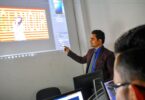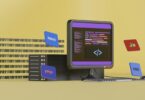Top 10 Software Trends to Watch in 2025
As we step deeper into the digital era, software development continues to evolve at an unprecedented pace. In 2025, a confluence of emerging technologies, shifting user expectations, and global events is reshaping the software landscape. From the rise of AI-powered development tools to the growing importance of ethical software design, the future promises innovation, disruption, and transformation. Here are the top 10 software trends to watch in 2025 that are set to redefine how we build and interact with technology.
1. AI-Augmented Software Development
Artificial Intelligence (AI) is no longer a novelty in software development—it’s becoming a necessity. In 2025, AI-augmented development will reach new levels of sophistication, with tools like GitHub Copilot, Amazon CodeWhisperer, and OpenAI Codex leading the way.
Key Features:
-
Code generation based on natural language prompts
-
Bug detection and resolution through AI pattern analysis
-
Automated testing and intelligent code review
AI is not replacing developers but amplifying their productivity. Teams are adopting AI-powered assistants to write boilerplate code, suggest architectural improvements, and automate repetitive tasks. Expect organizations to increasingly train proprietary AI models tailored to their tech stacks and business logic.
2. Low-Code and No-Code Expansion
The low-code/no-code (LCNC) movement is democratizing software creation. In 2025, even more non-technical users will be able to build sophisticated applications without writing traditional code.
Why It Matters:
-
Faster prototyping and development cycles
-
Empowering business users and citizen developers
-
Cost-efficient innovation
Platforms like Microsoft Power Apps, Bubble, OutSystems, and Retool are maturing, offering drag-and-drop tools and backend integrations. Expect LCNC to take on enterprise-grade use cases, including AI model deployment and real-time analytics dashboards.
3. Generative AI in User Applications
In 2025, generative AI will not just assist developers—it will be baked into end-user applications. From personalized content creation to conversational interfaces, generative AI will enhance user experiences across sectors.
Applications:
-
AI chatbots with near-human conversational abilities
-
Smart document and image generation
-
Adaptive UIs that change based on user behavior
Popular services like Notion AI and Canva are already integrating generative capabilities. In 2025, expect generative AI to be standard in productivity tools, e-commerce platforms, and education apps.
4. Edge and Serverless Computing Convergence
The need for faster, localized processing is driving the adoption of edge computing, while serverless architectures are reducing infrastructure complexity. In 2025, these two paradigms will converge.
Benefits:
-
Reduced latency by processing data closer to users
-
Elastic scalability without managing infrastructure
-
Lower operational costs and energy consumption
With 5G becoming ubiquitous, edge+serverless applications will thrive in areas like IoT, autonomous vehicles, and augmented reality. Platforms like AWS Lambda, Cloudflare Workers, and Azure Functions will be increasingly used in hybrid architectures.
5. Software Supply Chain Security
Software security is moving beyond code scanning and firewalls. In 2025, the focus will shift to securing the entire software supply chain, especially in light of high-profile attacks like SolarWinds.
Priorities:
-
Software Bill of Materials (SBOM) adoption
-
Zero Trust Architecture implementation
-
Real-time dependency monitoring
Tools like Snyk, Aqua Security, and GitHub Dependabot are gaining traction. The U.S. and EU are introducing regulatory frameworks that require greater transparency in software components, especially in critical industries.
6. Sustainable and Green Software Engineering
Sustainability is no longer optional. In 2025, organizations will prioritize green software engineering to reduce their digital carbon footprint.
Techniques:
-
Energy-efficient algorithms and code
-
Carbon-aware cloud computing
-
Sustainable software design principles
Developers are using tools like the Green Software Foundation’s Carbon Aware SDK to measure and optimize the environmental impact of their applications. Companies are also choosing data centers powered by renewable energy and are tuning workloads to run when energy grids are cleanest.
7. Composable Architecture and Modular Design
The demand for agility and scalability is driving the shift towards composable architecture—a design paradigm that emphasizes modularity and reusability.
Components:
-
Micro frontends and microservices
-
APIs as building blocks
-
Event-driven architecture
In 2025, composable software will allow teams to quickly assemble, reconfigure, and scale applications in response to changing business needs. Gartner predicts that organizations adopting composable architecture will outpace competitors by 80% in the speed of new feature delivery.
8. Privacy-Enhancing Computation
As data privacy regulations grow stricter (e.g., GDPR, CCPA, and China’s PIPL), developers are embracing privacy-enhancing technologies (PETs) to build compliant software.
Examples:
-
Federated learning: Training AI models without sharing raw data
-
Homomorphic encryption: Computing on encrypted data
-
Differential privacy: Minimizing the risk of individual re-identification
In 2025, we’ll see broader adoption of PETs in sectors like healthcare, finance, and advertising, where data sensitivity is paramount. Open-source libraries and cloud APIs will make these techniques more accessible to developers.
9. Quantum-Inspired Software Algorithms
While full-scale quantum computing is still on the horizon, quantum-inspired algorithms are making their way into mainstream software in 2025.
Use Cases:
-
Optimization problems in logistics and finance
-
Advanced simulations in material science and energy
-
Cryptography and secure communication
Classical computers can now simulate certain quantum behaviors using hybrid approaches, offering performance improvements. Companies like D-Wave, IBM, and Microsoft are leading this transition, providing SDKs like Qiskit and Azure Quantum that developers can experiment with.
10. Ethical Software and AI Governance
In 2025, ethics will be embedded in the software development lifecycle. As AI becomes more powerful, the demand for transparency, fairness, and accountability in software grows louder.
Focus Areas:
-
Bias detection in AI models
-
Explainable AI (XAI) tools
-
Ethical design frameworks
Tech companies are establishing AI ethics committees and auditing practices to ensure compliance with evolving societal norms and regulations. Open-source frameworks like IBM’s AI Fairness 360 and Google’s What-If Tool are being adopted widely to promote responsible AI development.
Conclusion:
The software trends of 2025 highlight a significant transformation in how applications are conceived, developed, and deployed. AI is pushing the boundaries of creativity and automation, edge and cloud technologies are merging to create seamless digital experiences, and ethical concerns are reshaping the way we think about software’s role in society.
For developers, entrepreneurs, and organizations, staying ahead means:
-
Embracing AI as both a tool and a partner.
-
Prioritizing modularity, sustainability, and security.
-
Designing with both human impact and regulatory compliance in mind.
These trends aren’t just technical—they’re cultural. They signal a shift toward software that is not only smart but also responsible, inclusive, and sustainable. As we move into 2025, those who align with these trends will lead the next wave of digital transformation.







